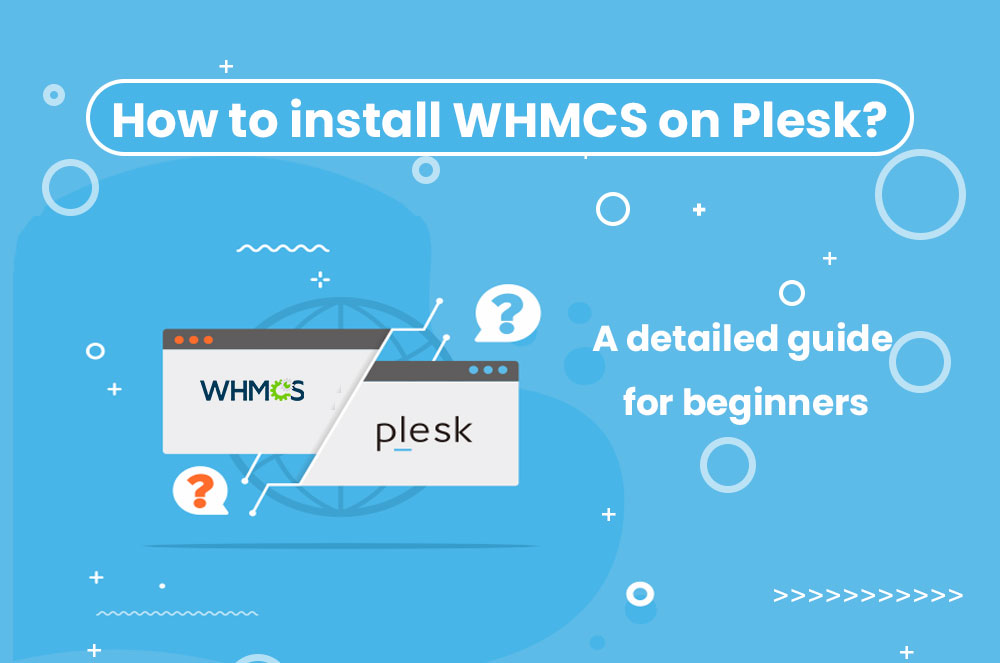
If you are looking to install WHMCS in Plesk easily without making any mistakes then you are at the right place. Here is a detailed guide about the right steps to follow to install WHMCS in Plesk successfully in a few easy steps.
Before getting started with the installation process, look back at our last blog if you want to explore the main features and advantages of using WHMCS over any other Web Hosting Management Solution then. We have explained the main feature of using WHMCS to manage your hosting business.
Let’s continue to install the WHMCS on Plesk.
To get started, first of all, you need to understand that WHMCS is not an open-source platform that you can use for free. It is a copyrighted and encrypted platform with IonCube.
To automate your web hosting business using WHMCS, you need to buy a plan from WHMCS’s official website. The basic plan starts at $18.95 with basic features and for a limited number of clients. To explore all the plans and pricing of WHMCS visit their website here.
Requirements: –
To install WHMCS on Plesk or any other Weh Hosting Control Panel there are some basic and mandatory system requirements that you need to cross-check before installation.
The following table shows the minimum and recommended system requirements for running WHMCS 8.0 and later.
| Requirement | Minimum | Recommended |
|---|---|---|
| PHP Version | 7.2 | Latest 7.3 or 7.4 Release |
| PHP Memory Limit | 64 MB | 128 MB |
| PHP Database Extensions | PDO | PDO |
| PHP Extensions | Curl With SSL GD2 Image Library JSON Support XML |
Iconv MBString GMP OpenSSL BC Math Intl Fileinfo |
| MySQL Version | 5.2.0 | Latest 5.7 |
| Ioncube Loaders | 10.2.0 or Later | The latest 10.x Ioncube for your PHP Version |
Installation Process: –
Here are the step-by-step instructions for you to install the WHMCS. Follow these instructions in the order they are mentioned.
- First of all, go to the official website of WHMCS and purchase a plan to start using WHMCS. You can see choose the plan according to the number of clients you are gonna manage and if you need priority support access. See WHMCS plans here – https://www.whmcs.com/pricing/
- After you purchase a license, download WHMCS from the WHMCS Members Area here – https://www.whmcs.com/members/
Select My Licenses in the Services menu.
Select one of your active license keys to view the details
Click Download Now to download the latest stable release. If you chose to purchase any addons that require extra files, their downloads will also appear here.
Save the ZIP file to your computer. - Then log in to your Plesk dashboard, go to the directory path /var/www/vhosts/domain.com/crons/cron.php and upload the files here.
- After the upload is complete you will get a URL – http://demo.com/install.php – where it will automatically check requirements if WHMCS can be installed or not.
- After the system has checked the requirements you will come over to an interface where you need to enter your WHMCS license key and database details, and you are ready to go.
- Also, you need to do one more thing to run your WHMCS successfully, is that you need to delete the install directory otherwise your system will hit an error.
- You must create cron tasks in order to automate tasks within WHMCS. The system cron automates tasks within WHMCS. Configure this to use the appropriate frequencies.
| Version | System Cron Frequency |
|---|---|
| WHMCS 6.3.x and earlier | Once per day. |
| WHMCS 7.0 and later | Every 5 minutes, or as frequently as your hosting provider allows (minimum once per hour). |
Sample Cron Command – */5 * * * * php -q /home/username/crons/cron.php
You can find the correct command to copy-and-paste for your WHMCS installation by navigating to Configuration () > System Settings > Automation Settings or, prior to WHMCS 8.0, Setup > Automation Settings. Then, copy the command using the copy button on the field.
Additional steps to follow to increase the security of your WHMCS: –
You need to follow these steps while installing the WHMCS on Plesk. It makes it harder for bots and other malicious users to find your admin login URL, which ultimately adds to your security.
- Open the configuration.php file within your WHMCS installation’s root directory. At the bottom of the file (before the closing PHP tag ?> if one exists), add the following line: $customadminpath = “mycustomfoldername”
Replacing mycustomfoldername with the name you wish to use for your admin directory. This should just be the directory name, not a full path. If you got any errors, you can simply read the guide to resolve the errors at – https://docs.whmcs.com/Customising_the_Admin_Directory or you can contact us - For security purpose you can hide your cron file from public access. Create your cron custom path – $crons_dir = ‘/home/username/whmcs_crons/’


Comments
Ahan shirin
Very helpful article. Thanks For sharing.